The Seasonal Classroom
- Natalia Kokotou
- Oct 30, 2016
- 2 min read

As the seasons change seamlessly, so does our outdoor classroom; reflecting the natural world around it.
The vineyard is now awash with colours, in shades of green, yellow, red, brown and gold. The children carry baskets, up the forest path and through the vines, to gather materials in. Back at the ponds, the outdoor classroom is set up with a variety of stations.
There are paints and paper on the table. Earth and sand-boxes have been made out of old barrels from the winery. There is a cardboard frame that the children use as a house or a kitchen or a boat, depending on their game. Natural materials are used as building blocks and are stacked high into a tower; a curved bit of wood serves as a bridge. Pots and pans and all necessary cooking utensils make up the mud kitchen; the balance route and rope ladder always pose a challenge. Baskets and piles of materials vary according to the season: fruits, such as pomegranates, apples, chestnuts and walnuts; vine leaves, pine needles acorns and pinecones are but a few. The contents of the children’s baskets are added to these and are studied and used accordingly.
The teachers remark on the colors, the texture, the smell, the taste and the sound they make. The children are encouraged to feel the wrinkly texture of the walnut shell, to shake a couple in their fist and hear them jangle, to break one with a stone and taste the flesh.
A pomegranate is placed on a log and two boys help drive a stick into it, piercing the soft skin. The red juice begins to trickle out and run over the log before the sweet seeds appear. Once it splits open, they pick out the seeds and offer them around to their friends.
Leaves and twigs are used as stamps or are tied into paintbrushes. Pinecones are hanging from a tree and a boy with a paintbrush skillfully aims for them. Once satisfied with his work, he moves on to paint the tree trunk. Various bits and pieces get thrown into a pot and are turned into a cooking game in the mud kitchen. Water is endlessly carted back and forth in order to improve the consistency of the mud. The mud itself is used as paint and is spread in great strokes across white paper.
Using all their senses, the children explore and make, becoming more aware of themselves and of their environment.
The children line up on the balance route, each standing on an upturned log. They follow the teacher in a version of “head, shoulders, knees and toes”, jumping off their log at the end onto the soft grass below. Though it seems a small height, it took a lot of practice and encouragement before the children attempted the jump. Some cautiously climbing off, some holding a helping hand at first, but as they become more aware of their bodies, their abilities and limitations, their confidence grows and they take the leap forward.




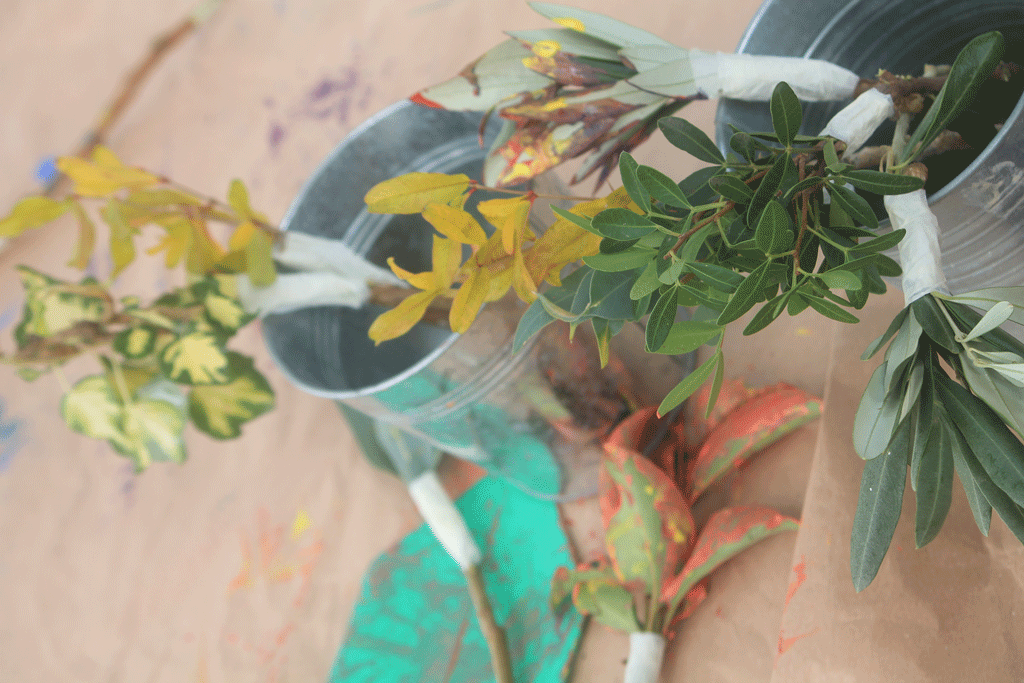
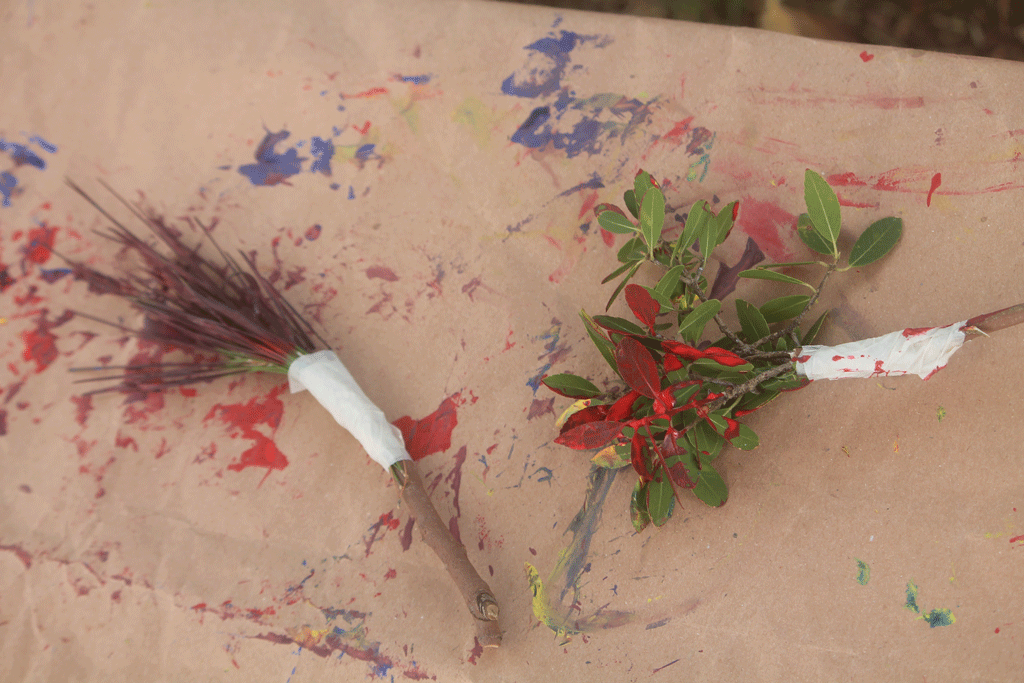
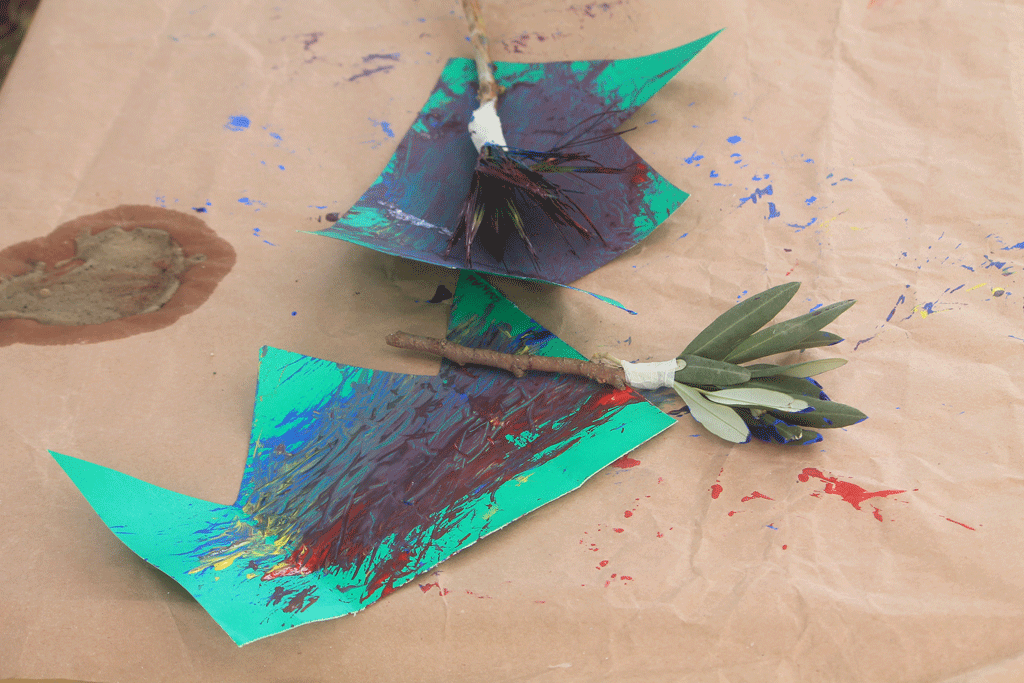
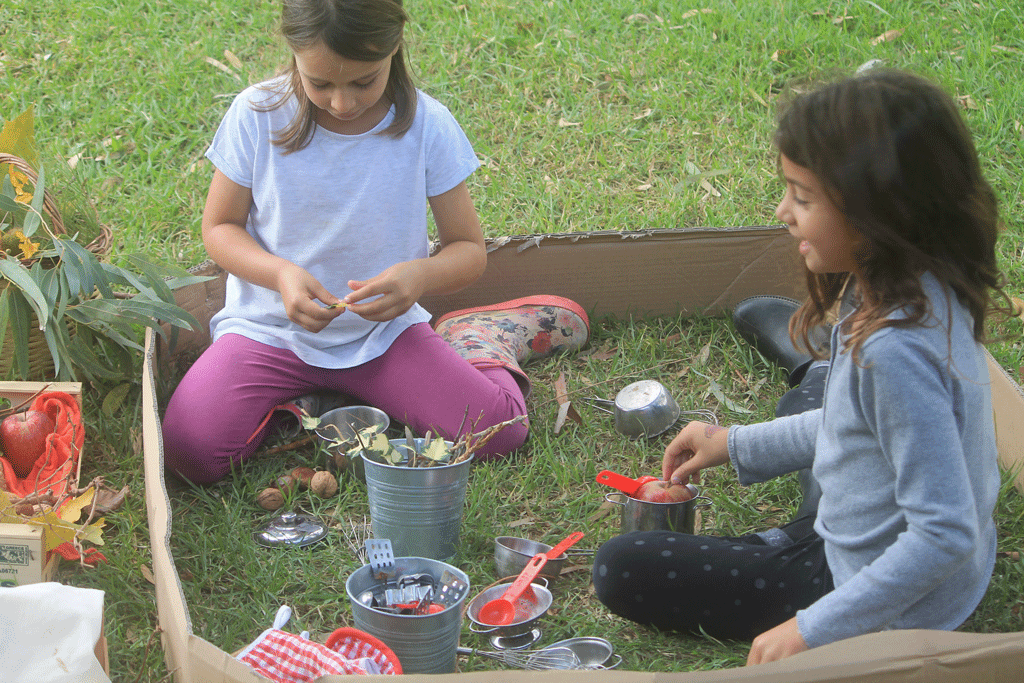
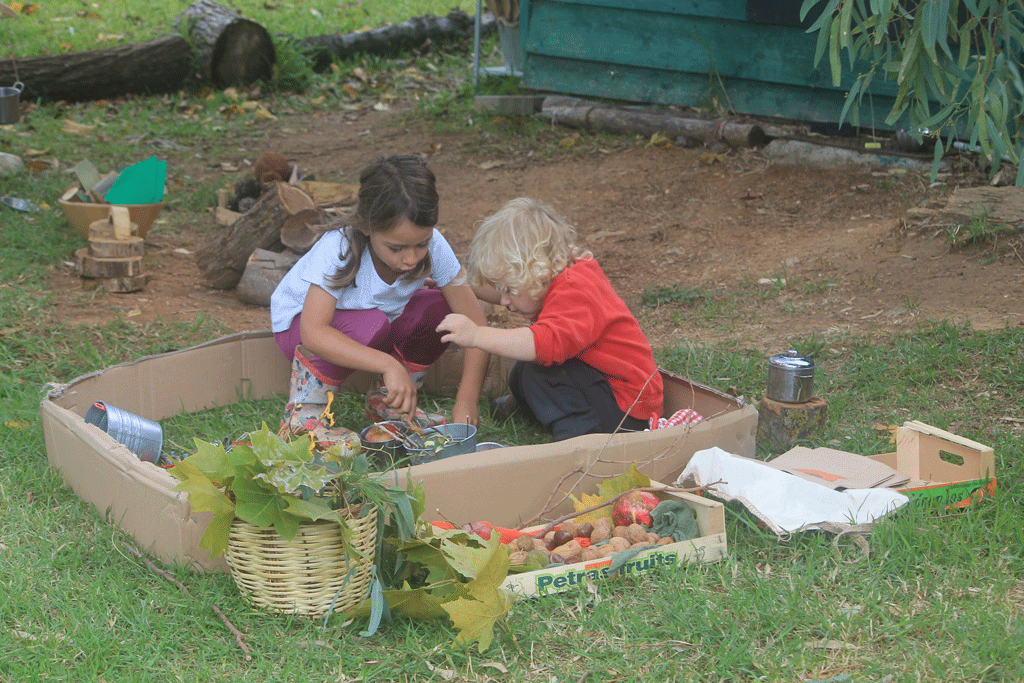

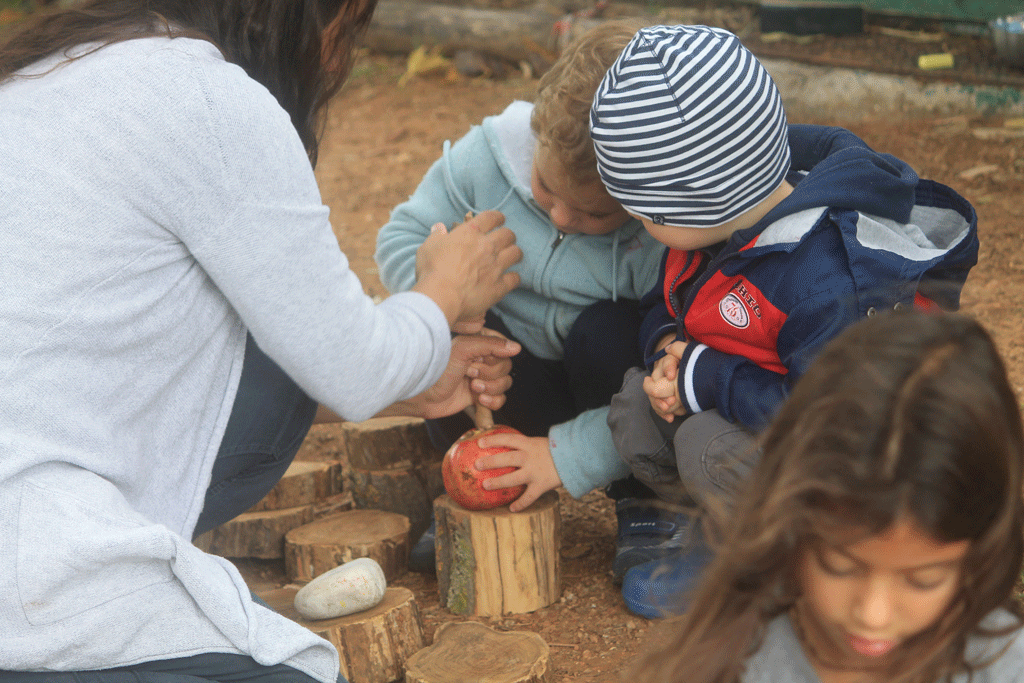
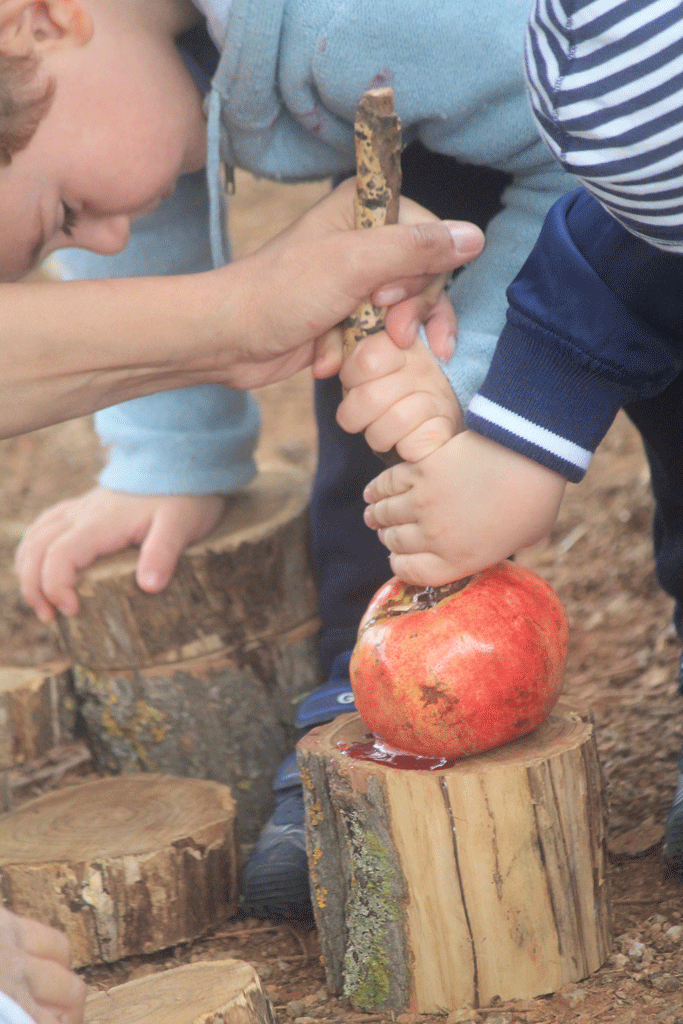
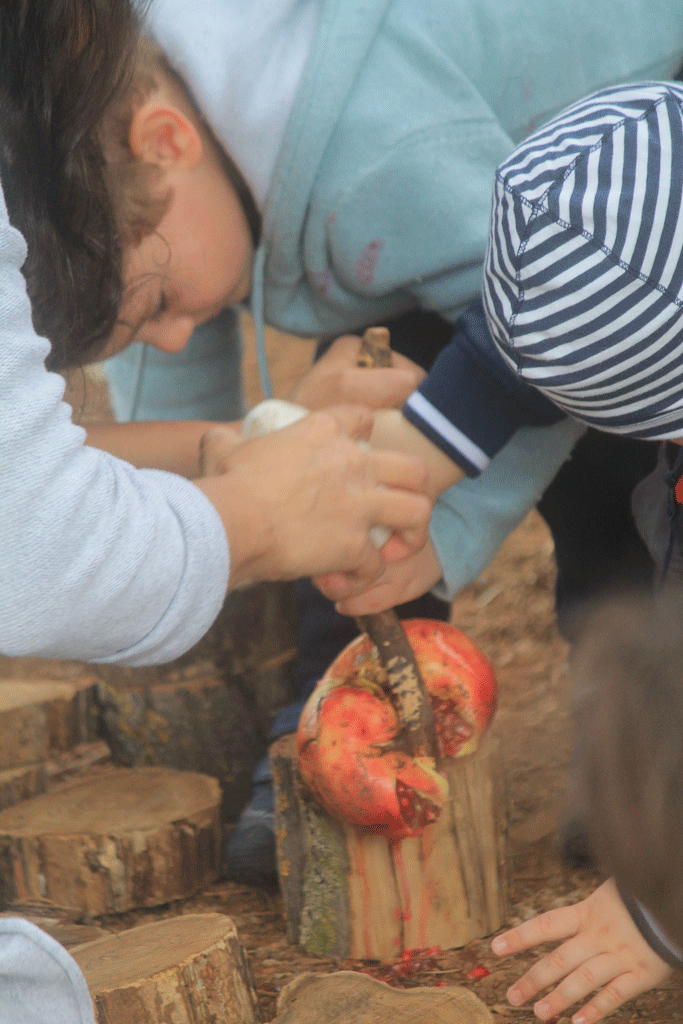
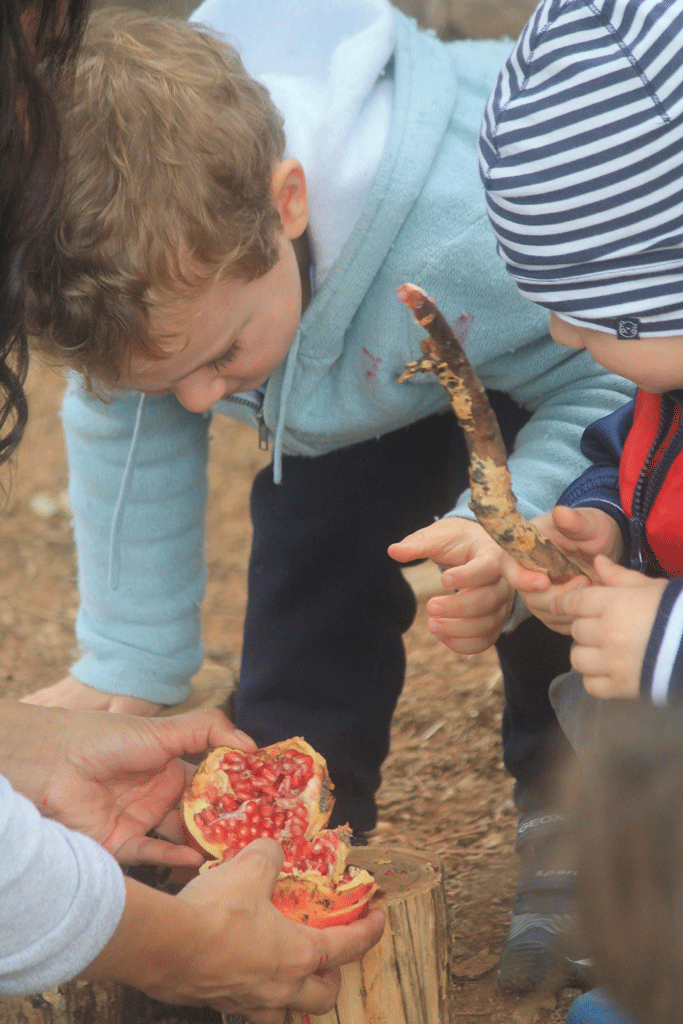
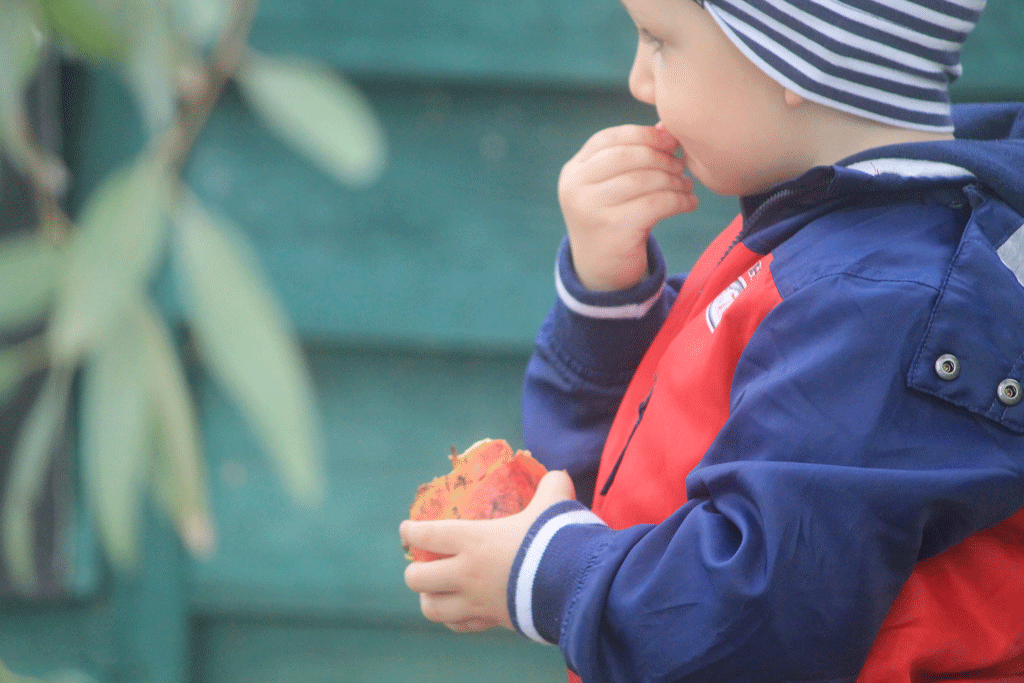
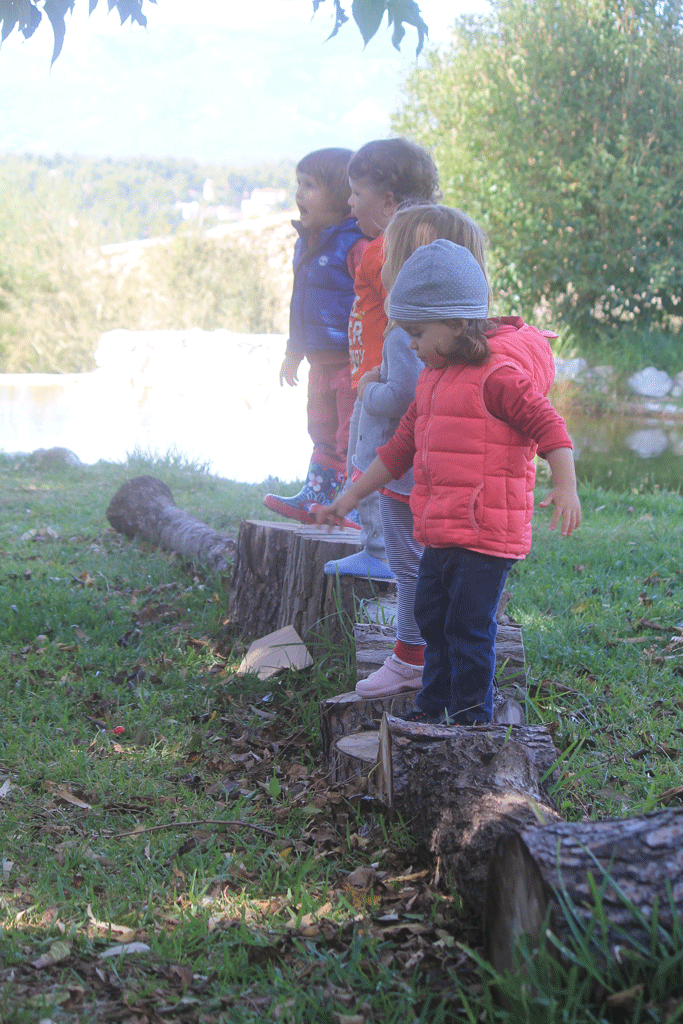


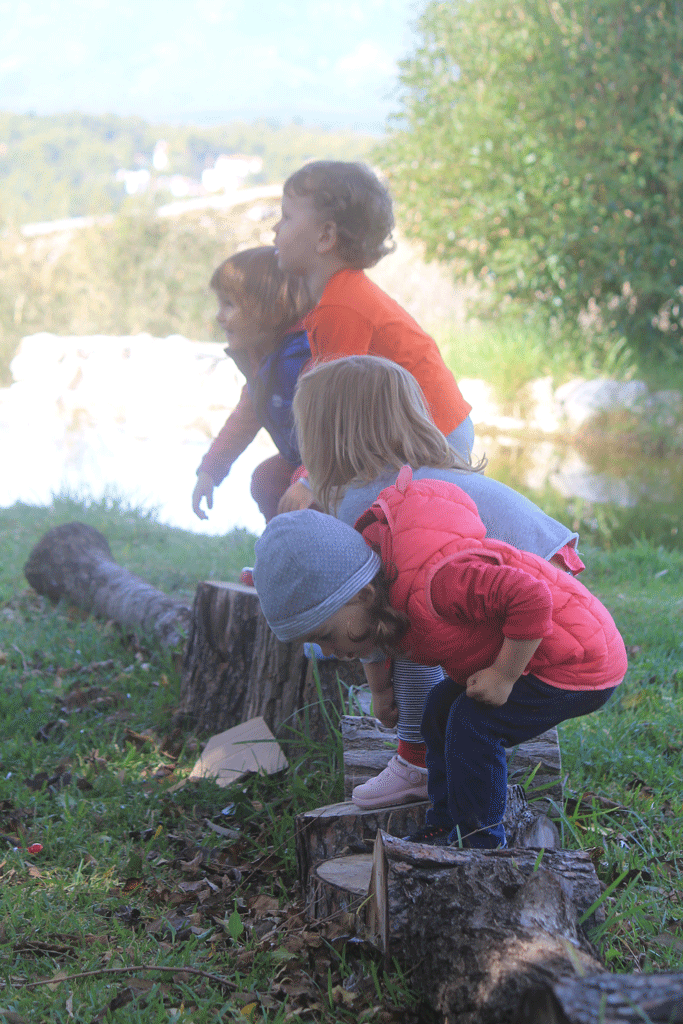
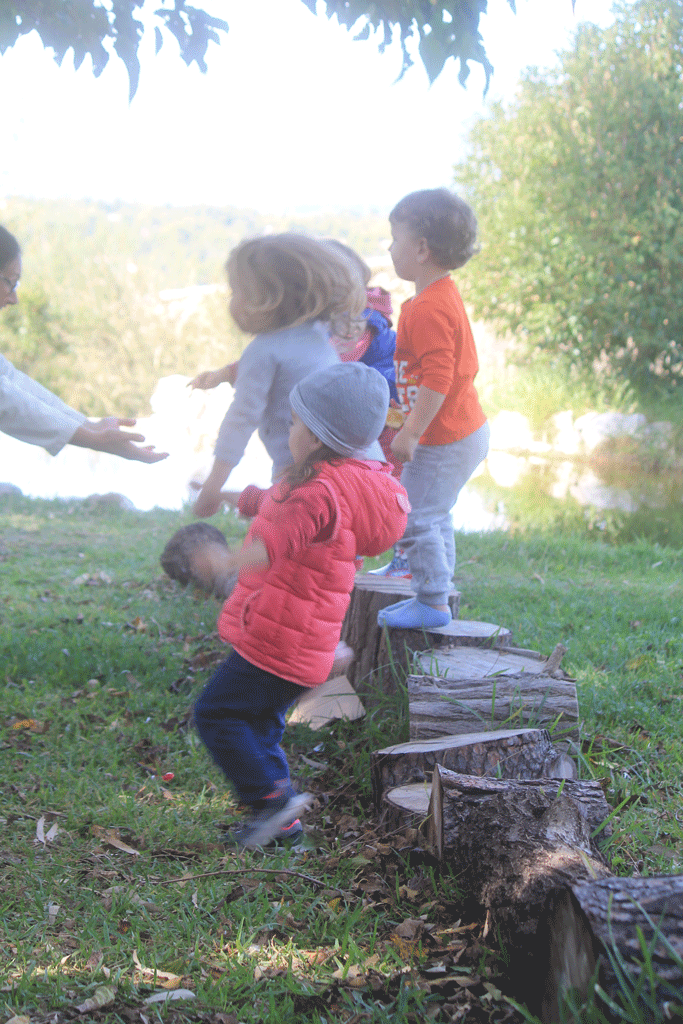
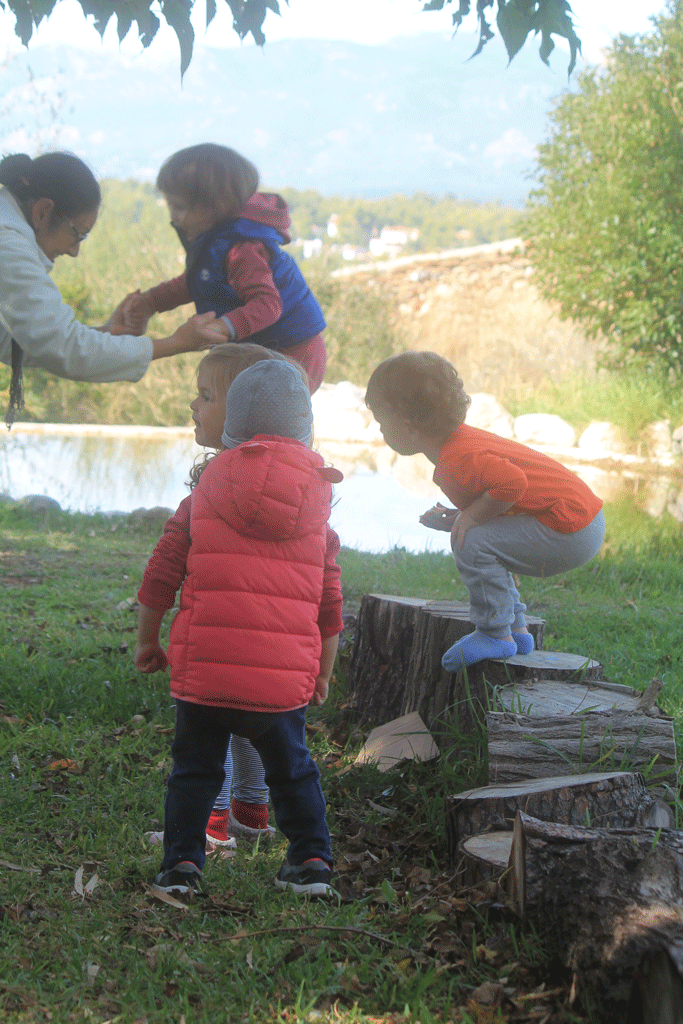
Comments